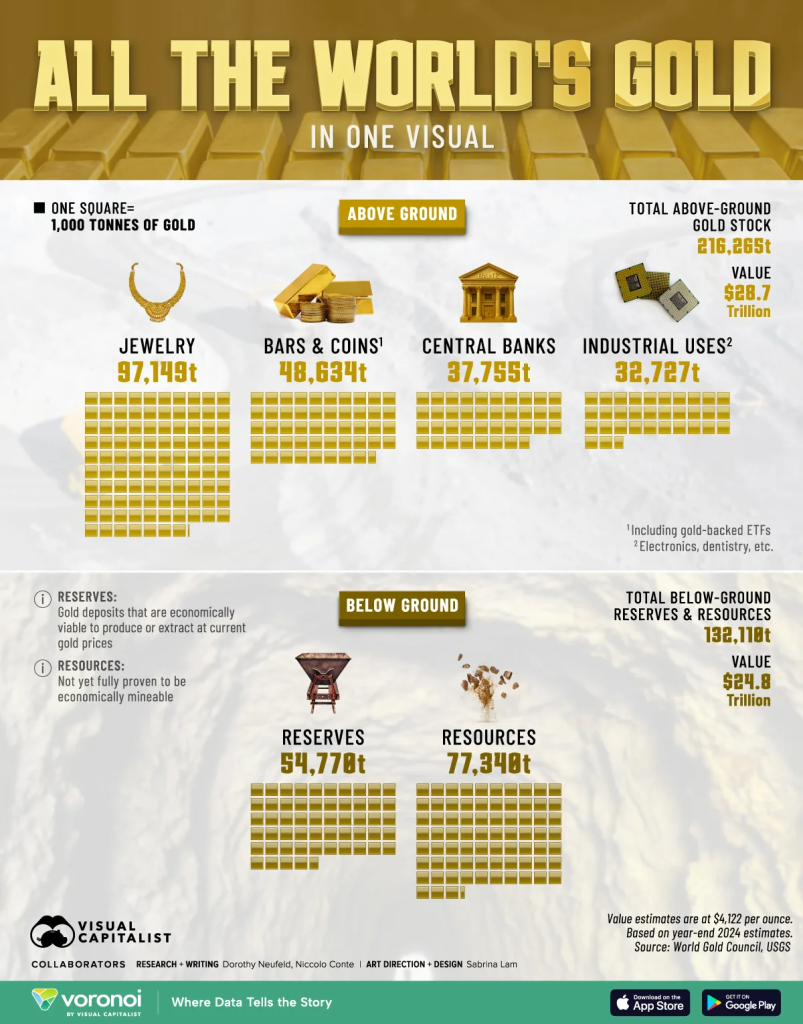Vancouver, British Columbia–(Newsfile Corp. – December 17, 2025) – West Point Gold Corp. (TSXV: WPG) (OTCQB: WPGCF) (FSE: LRA0) (“West Point Gold” or the “Company”) is pleased to announce the results for three holes from the high-grade zone at Northeast (NE) Tyro, part of the ongoing 15,000 metre (m) drill program at its flagship Gold Chain Project in Arizona. The Company is reporting assay results for three drill holes (658m), GC25-82 through GC25-84.
Highlights:
- Hole GC25-84 returned 24.4 m of 5.92 g/t Au at 120.4 to 144.8 m, including 12.2 m of 10.51 g/t Au at 132.6 m to 144.8 m, 90 m below hole GC25-78 which returned 22.9 m of 1.63 g/t Au.
- Hole GC25-83 returned 16.8 m of 8.30 g/t Au at 158.5 to 175.3 m, including 6.1 m of 17.61 g/t Au at 167.6 to 173.7 m about 45m below GC25-49 (62.5 m of 4.73 g/t Au).
- Drilling continues to explore the deeper portions of the high-grade zone at NE Tyro with four holes (936 m) completed with assays pending.
“Drilling at NE Tyro continues to return better than expected grades. Importantly, grades appear to be improving at depth as the veining coalesces, typical of low-sulphidation epithermal gold systems. These results continue to demonstrate continuity of high grades, expanding the high-grade zone to depth and along strike to the northeast. We expect these results to positively impact the grade profile and the overall scale of our upcoming maiden resource. Drilling continues at NE Tyro,” stated Derek Macpherson, President and CEO.
Table 1: Drill Results
| Holes | From (m) | To (m) | Width (m) | Grade (g/t Au) |
| GC25-82 | 138.7 | 234.7 | 96.0 | 0.42 |
| GC25-83 | 158.5 | 175.3 | 16.8 | 8.30 |
| including | 167.6 | 173.7 | 6.1 | 17.61 |
| GC25-84 | 120.4 | 144.8 | 24.4 | 5.92 |
| including | 132.6 | 144.8 | 12.2 | 10.51 |
Note: All widths shown are downhole; true widths are approximately 60-70% of downhole widths.
Figure 1: Plan view of the Main Tyro vein showing geology and drilling conducted in 2021, 2023, 2024 and 2025. Note the location of Hole Nos. GC25-82, GC25-83 and GC25-84.
To view an enhanced version of this graphic, please visit:
https://images.newsfilecorp.com/files/5717/278291_2e529fe224e6aaa8_002full.jpg
Figure 2. Longitudinal perspective of the Tyro Main and NE Zones Showing Core and RC Drilling to Date. Holes GC25-82 through GC25-84 are highlighted and described below.
To view an enhanced version of this graphic, please visit:
https://images.newsfilecorp.com/files/5717/278291_2e529fe224e6aaa8_003full.jpg
Summary
These results follow the ongoing 15,000 m drilling program at the Company’s Gold Chain project in Arizona, which is focused on expanding the higher-grade zone at NE Tyro laterally and downward, as identified in Q2 of 2025. The three holes comprising this release, GC25-82 through GC25-84, represent 658 m of 3,229 m drilled to date of the 15,000 m program.
All three holes in this release have extended gold mineralization to depth from 50 to 90 metres. These results, in context with previous drilling, suggest a coalescing of veins and veinlets downward and to the northeast with a marked increase in gold grades, i.e. GC25-78 with 22.9 m of 1.56 g/t Au and GC25-84 with 24.4 m of 5.92 g/t Au, including 12.2 m of 10.51 g/t Au (Figure 4). This coalescing of veins and veinlets is common in many epithermal vein systems. Along with the increased gold grades at depth, close inspection of the drill cuttings reveals an increase in varicolored chalcedony, crustiform banding, adularia and illite(?)-pyrite alteration in the wallrock.
Hole GC25-83
Hole GC25-83 traversed the Tyro NE vein/zone about 30 to 50 m below GC25-49 (62.5 m at 4.73 g/t Au), revealing a more defined vein structure with the strongest vein developed at the footwall contact, likely an important fault. The hole intersected 16.8 m of 8.30 g/t Au at 158.5 to 175.3 m, including 6.1 m of 17.61 g/t Au (Figure 3).
Figure 3: Cross-sectional view of Hole GC25-83 down-dip from Holes GC25-49 and GC21-14
To view an enhanced version of this graphic, please visit:
https://images.newsfilecorp.com/files/5717/278291_2e529fe224e6aaa8_004full.jpg
Hole GC25-84
Hole GC25-84 was drilled to test the vein system about 90 m below Hole GC25-78 which traversed 22.9 m of 1. 56 g/t Au (Figure 4). This hole encountered a more discrete, compact mineralized package composed of quartz-calcite-(adularia) vein from 120.4 m to 144.8 m (24.4 m) containing 5.92 g/t Au. Quartz veinlets and breccia give way to vein and breccia toward the footwall contact with 6.1 m at 15.1 g/t Au. Elevated percentages of varicolored chalcedony + adularia appear to correspond to higher gold grades (up to 25.1 g/t Au).
The strengthening or consolidation of the vein at the footwall contact has been observed in other surrounding holes. The results indicate that the mineralized zone has coalesced into a more discrete mineralized package or vein in the relatively short distance of less than 150 metres.
Figure 4: Cross Sectional View of Hole GC25-84 down-dip from Holes GC25-77/-78.
To view an enhanced version of this graphic, please visit:
https://images.newsfilecorp.com/files/5717/278291_2e529fe224e6aaa8_005full.jpg
Hole GC25-82
Hole GC25-82 was designed to test the deeper projection of a broad zone of quartz-calcite veinlets observed in Hole GC25-60 (50.3 m @ 1.29 g/t Au) about 65 m deeper into the vein system. A broad zone of veining was encountered from 138.7 m to 234.7 m (96.0 metres) at 0.42 g/t Au (Figure 2). These results, in conjunction with GC25-60, suggest that the Tyro NE zone is horse tailing as it approaches the ‘bend’ where mapping, surface sampling and drilling have identified, but not defined, a ‘stepover’ into the Tyro Main zone. Additional drilling will be needed to better define the extent of this broad, low-grade zone.
Qualified Person
Robert Johansing, M.Sc. Econ. Geol., P. Geo., the Company’s Vice President, Exploration, is a qualified person (“QP”) as defined by NI 43-101 and has reviewed and approved the technical content of this press release. Mr. Johansing has also been responsible for overseeing all phases of the drilling program, including logging, labelling, bagging and transport from the project to American Assay Laboratories of Sparks, Nevada. Drillholes have a diameter of about 10cm, and samples have an approximate weight of 5 to 10kg. Samples were then dried, crushed and split, and pulp samples were prepared for analysis. Gold was determined by fire assay with an ICP finish, and over-limit samples were determined by fire assay and gravimetric finish. Silver plus 15 other elements were determined by Aqua Regia ICP-AES (IM-2A16), and over-limit samples were determined by fire assay and gravimetric finish. Both certified standards and blanks were inserted on site along with duplicates, standards and blanks inserted by American Assay. The results summarized above have been carefully reviewed with reference to the QA/QC results. Standard sample chain of custody procedures were employed during drilling and sampling campaigns until delivery to the analytical facility.
About West Point Gold Corp.
West Point Gold is an exploration and development company focused on unlocking value across four strategically located projects along the prolific Walker Lane Trend in Nevada and Arizona, USA, providing shareholders with exposure to multiple discovery opportunities across one of North America’s most productive gold regions. The Company’s near-term priority is advancing its flagship Gold Chain Project in Arizona.
For further information regarding this press release, please contact:
Aaron Paterson, Corporate Communications Manager
Phone: +1 (778) 358-6173
Email: info@westpointgold.com
Stay Connected with Us:
LinkedIn: linkedin.com/company/west-point-gold
X (Twitter): @westpointgoldUS
Facebook: facebook.com/Westpointgold/
Website: westpointgold.com/
FORWARD-LOOKING STATEMENTS:
Certain statements contained in this press release constitute forward-looking information. These statements relate to future events or future performance. Forward-looking statements include estimates and statements that describe the Company’s future plans, objectives or goals, including words to the effect that the Company or management expects a stated condition or result to occur. The use of any of the words “could”, “intend”, “expect”, “believe”, “will”, “projected”, “estimated” and similar expressions and statements relating to matters that are not historical facts are intended to identify forward-looking information and are based on the Company’s current belief or assumptions as to the outcome and timing of such future events including, among others, assumptions about future prices of gold, silver, and other metal prices, currency exchange rates and interest rates, timing of the Company’s maiden resource estimate, favourable operating conditions, political stability, obtaining government approvals and financing on time, obtaining renewals for existing licenses and permits and obtaining required licenses and permits, labour stability, stability in market conditions, availability of equipment, availability of drill rigs, and anticipated costs and expenditures. The Company cautions that all forward-looking statements are inherently uncertain, and that actual performance may be affected by a number of material factors, many of which are beyond the Company’s control. Such factors include, among other things: risks and uncertainties relating to West Point Gold’s ability to complete any payments or expenditures required under the Company’s various option agreements for its projects; and other risks and uncertainties relating to the actual results of current exploration activities, the uncertainties related to resources estimates; the uncertainty of estimates and projections in relation to production, costs and expenses; risks relating to grade and continuity of mineral deposits; the uncertainties involved in interpreting drill results and other exploration data; the potential for delays in exploration or development activities; uncertainty related to the geology, grade and continuity of mineral deposits; the possibility that future exploration, development or mining results may vary from those expected; statements about expected results of operations, royalties, cash flows, financial position may not be consistent with the Company’s expectations due to accidents, equipment breakdowns, title and permitting matters, labour disputes or other unanticipated difficulties with or interruptions in operations, fluctuating metal prices, unanticipated costs and expenses, uncertainties relating to the availability and costs of financing needed in the future and regulatory restrictions, including environmental regulatory restrictions. The possibility that future exploration, development or mining results will not be consistent with adjacent properties and the Company’s expectations; operational risks and hazards inherent with the business of mining (including environmental accidents and hazards, industrial accidents, equipment breakdown, unusual or unexpected geological or structural formations, cave-ins, flooding and severe weather); metal price fluctuations; environmental and regulatory requirements; availability of permits, failure to convert estimated mineral resources to reserves; the inability to complete a feasibility study which recommends a production decision; the preliminary nature of metallurgical test results; fluctuating gold prices; possibility of equipment breakdowns and delays, exploration cost overruns, availability of capital and financing, general economic, political risks, market or business conditions, regulatory changes, timeliness of government or regulatory approvals and other risks involved in the mineral exploration and development industry, and those risks set out in the filings on SEDAR+ made by the Company with securities regulators. Although the Company believes that the assumptions and factors used in preparing the forward-looking information in this corporate press release are reasonable, undue reliance should not be placed on such information, which only applies as of the date of this news release, and no assurance can be given that such events will occur in the disclosed time frames or at all. The Company expressly disclaims any intention or obligation to update or revise any forward-looking statements whether as a result of new information, future events or otherwise, other than as required by applicable securities legislation.
Neither the TSX Venture Exchange nor its Regulation Services Provider (as that term is defined in the policies of the TSX Venture Exchange) accepts responsibility for the adequacy or accuracy of this release.

To view the source version of this press release, please visit https://www.newsfilecorp.com/release/278291














